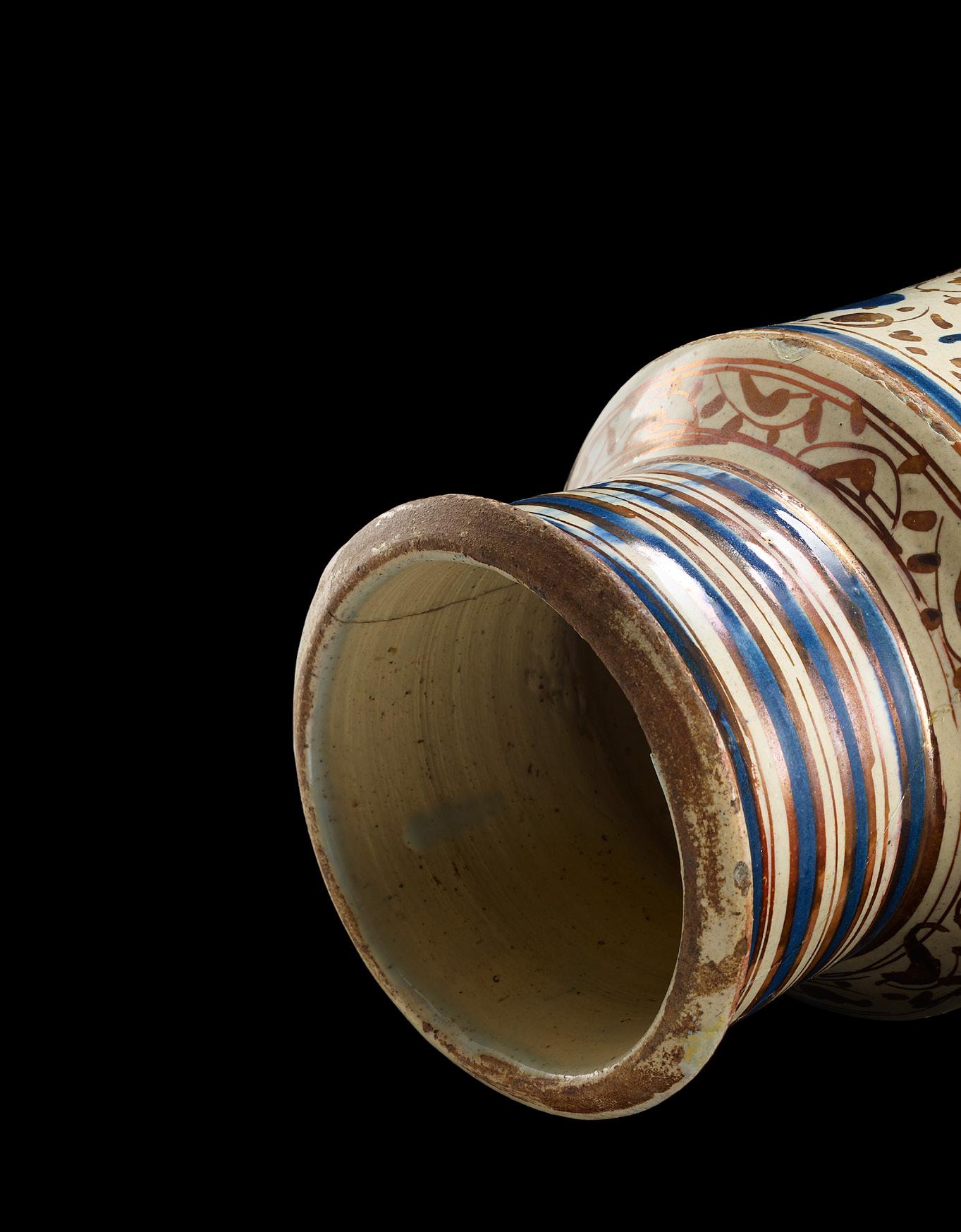
5 minute read
05 Albarello
Albarello
05
Advertisement

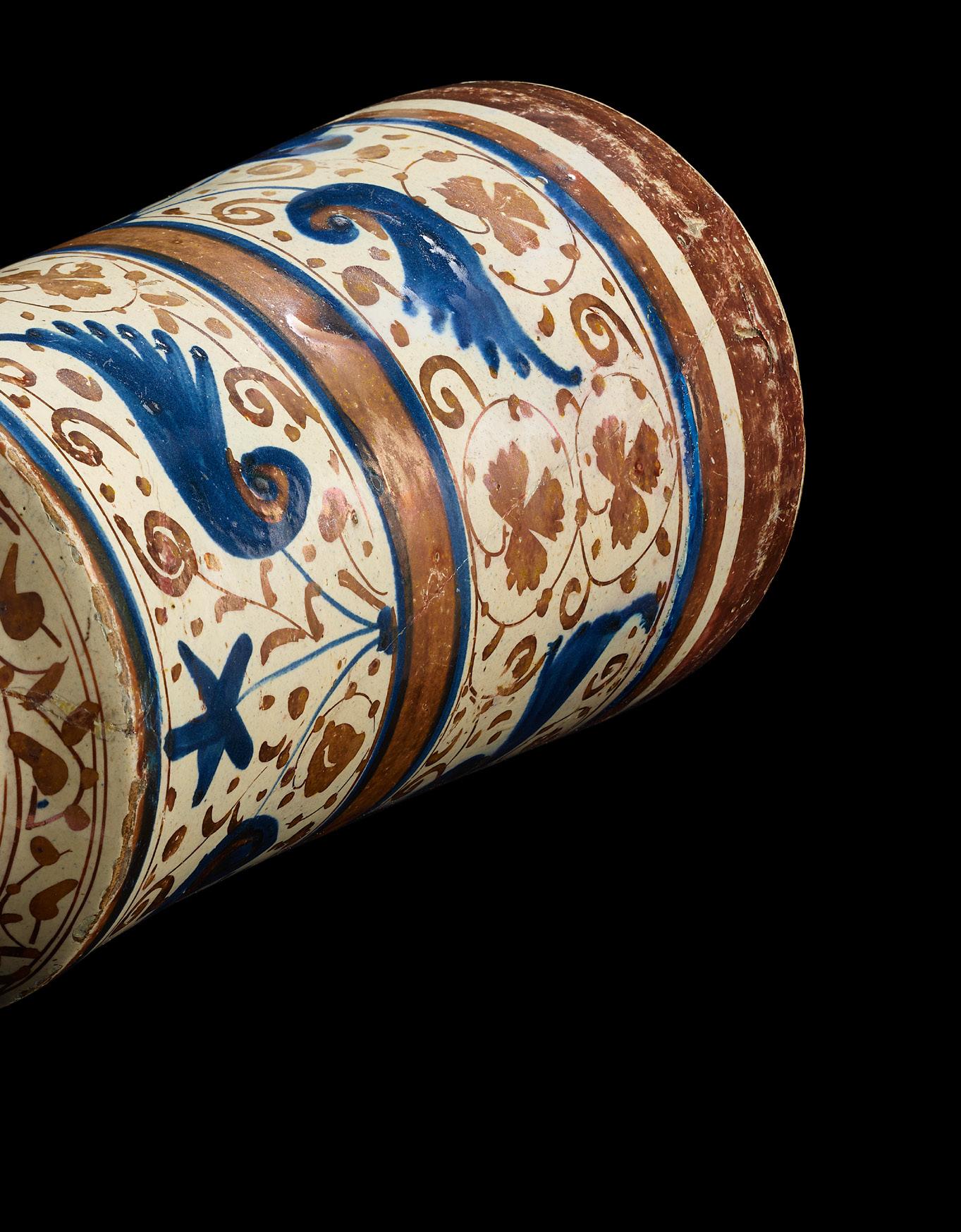

Albarello
ALBARELLO
Paterna or Manises 1435 – 1460
Tin-glazed and lustred earthenware Height: 29 cm
Provenance: George and Florence Blumenthal, New York; gift of George Blumenthal to the Metropolitan Museum of Art, 1941 (41.190.112); together with the ivory wing of a medieval tabernacle (France, c. 1300) in the collection of Paul W. Doll jr., exchanged in June 2007 for a marble tabernacle (France, 14th century) from the Doll collection; collection of Paul W. Doll jr., New York, until 2020.
Related literature:
Caiger-Smith, Alan. Lustre Pottery, Technique, Tradition and Innovation in Islam and the Western World, London 1991
Dectot, Xavier. Céramiques hispaniques (XII-XVIII siècle), Paris 2007 Id., Reflets d’or, d’orient en occident. La céramique lustrée IX-XV siècle, Paris 2008
Hudson, Christopher. The Arts of Fire. Islamic Influences on Glass and Ceramics of the Italian Renaissance, Los Angeles 1994, p. 39 Monreal, Louis: Schätze des Aga Khan Museums, Meisterwerke islamischer Kunst, Berlin 2010
Ray, Anthony:Spanish Pottery, 1248 – 1898, London 2000, p. 81, no. 170 Sievernich, Gereon and Budde, Hendrik: Europa und der Orient: 800 – 1900, Berlin Islamic and Hispano-Moresque Pottery in Spain: A Technical Approach, Zaragoza, Spain This three-coloured albarello, a vessel, used to store valuable spices, was probably made in a pottery workshop in Manises or Paterna in the second half of the 15th century. Standing on a distinctly modelled pedestal, the tall, slender cylindrical body has slightly concave walls; the shoulder is short and the neck section long. The white-glazed body is divided into four registers coloured in a bold cobalt blue and manganese brown. The two principle sections, divided by a manganese brown ring outlined in blue, are decorated with vegetal shapes (with alternating leaf and floral patterns), an ataurique decorative motif typical of Arab earthenware. Fine arabesques embellish the shoulder; the long, straight neck has a linear decoration in cobalt blue and manganese brown.
The first lustreware pieces were fashioned in the early 9th century under the Abbasids in present-day Iraq although, originally, it is probable that glassmakers already developed the lustreware technique in the 8th century. The recipe for exquisite earthenware was a well-kept secret. Through the migration of potters and their families the secret technique spread across Egypt, then Syria and Persia. From the 12th century onwards lustreware was produced in Muslim regions on the Iberian Peninsula. The workshops in Manises and Paterna near Valencia are famous. For the potters, the long, stable political climate and wealthy clients in ‘al-Andalus’ were conducive to their success. The region also boasted rich deposits of metals and clay that were needed in the production of lustreware.
The manufacturing instructions from the 14th century were passed down by Abu’l-Qasim who came from a dynasty of potters in Kashan, Iran, the Persian centre of lustreware. According to Abu’l-Qasim, earthenware has to be fired twice. Before the first firing, the clay is coated with a tin glaze; for the second firing, the object is painted with a paste comprising silver and copper compounds dissolved in grape juice or vinegar.
05
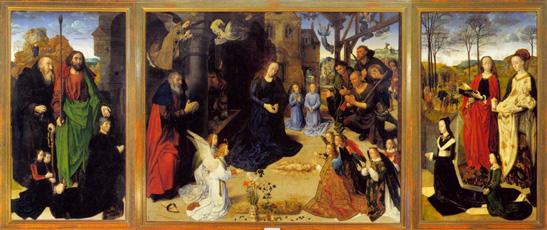
The Portinari Triptych by Hugo van der Goes (Gent 1435/40 – 1482 Brussels), central panel, oil on wood, height: 253 x width: 304 cm, Bruges, 1477/1478 © Gabinetto Fotografico delle Gallerie degli Uffizi (Wikipedia)
The second and decisive firing must be made in a special kiln. By reducing the supply of oxygen the metallic pigment bonds are modified, producing a shimmering film on the surface of the ceramic piece. After firing, the item is polished with damp earth after cooling. Firing is considered a success when the object is a ‘reddish gold and shines like the sun’ (op. cit. Hudson, p. 39).

In the Middle Ages, Spanish-Islamic lustreware from Andalusia that shimmered like gold was highly prized in Europe. Items made in Muslim pottery workshops were exported over land and across the Mediterranean to Christian countries in the Western World, to Sicily and northern Germany. Lustreware was considered a status symbol – not only by the great houses of Spain. The Duke of Burgundy and the Medicis of Florence were also among those who commissioned and collected works which often bore religious or heraldic decorative motifs.
Florian Eitle-Böhler
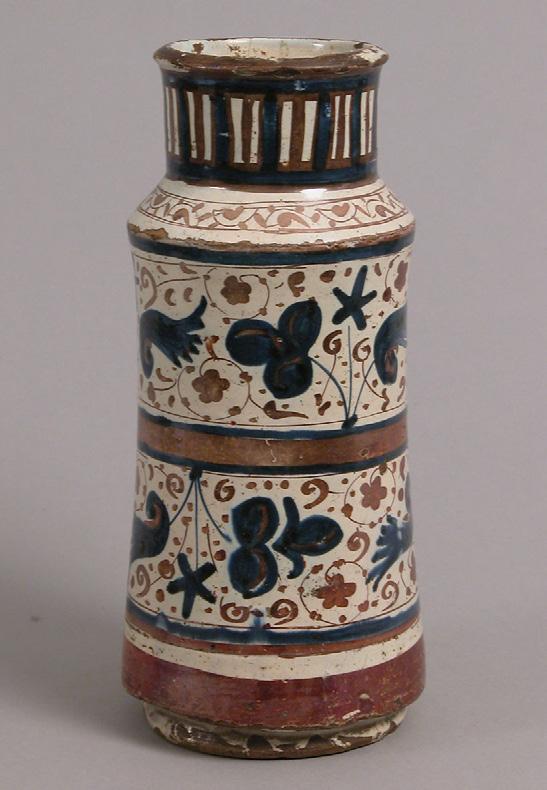
Albarello, formerly in the Blumenthal Collection © Metropolitan Museum of Art, New York Evidence in the visual arts of the importance that southern Spanish lustreware attained in the 14th century can be found in the central panel of Hugo van der Goes’ triptich Adoration of the Shepherds. A lustreware albarello is being used as a vase; it is shown both in its new function as an everyday object and, at the same time, as a representative, prestigious object.
This albarello entered the holdings of the Metropolitan Museum of Art in 1941 as part of the extensive bequest of the banker George Blumenthal (1858 – 1941). In 2007, together with the wing o f a medieval tabernacle, the vessel was exchanged for a marble tabernacle from the 14th century in the collection of Paul W. Doll jr., of New York. The MET presumably decided to part with Blumenthal’s gift as two albarelli with very similar decorative elements were included in the bequest, as seen in the images.
1 Originally, vessels of this type were probably used to store valuable spices that were transported along the trade routes from the East to Moorish Spain. Odourless and easy to close they were later used in Italy, in particular, as apothecary jars. They are cylindrical in shape with slightly concave walls. The opening was stopped with a cloth or parchment, tied and held in place by the slight notch around the neck ring. 2 Andalusian lustreware has a very homogenous style which makes it difficult to differentiate between individual workshops. As a result our albarello cannot be attributed with any certainty to either Paterna or Manises. 3 Christopher Hudson, The Arts of Fire. Islamic Influences on Glass and Ceramics of the
Italian Renaissance, The J. Paul Getty Museum, Los Angeles 1994, p. 39 2008).
05
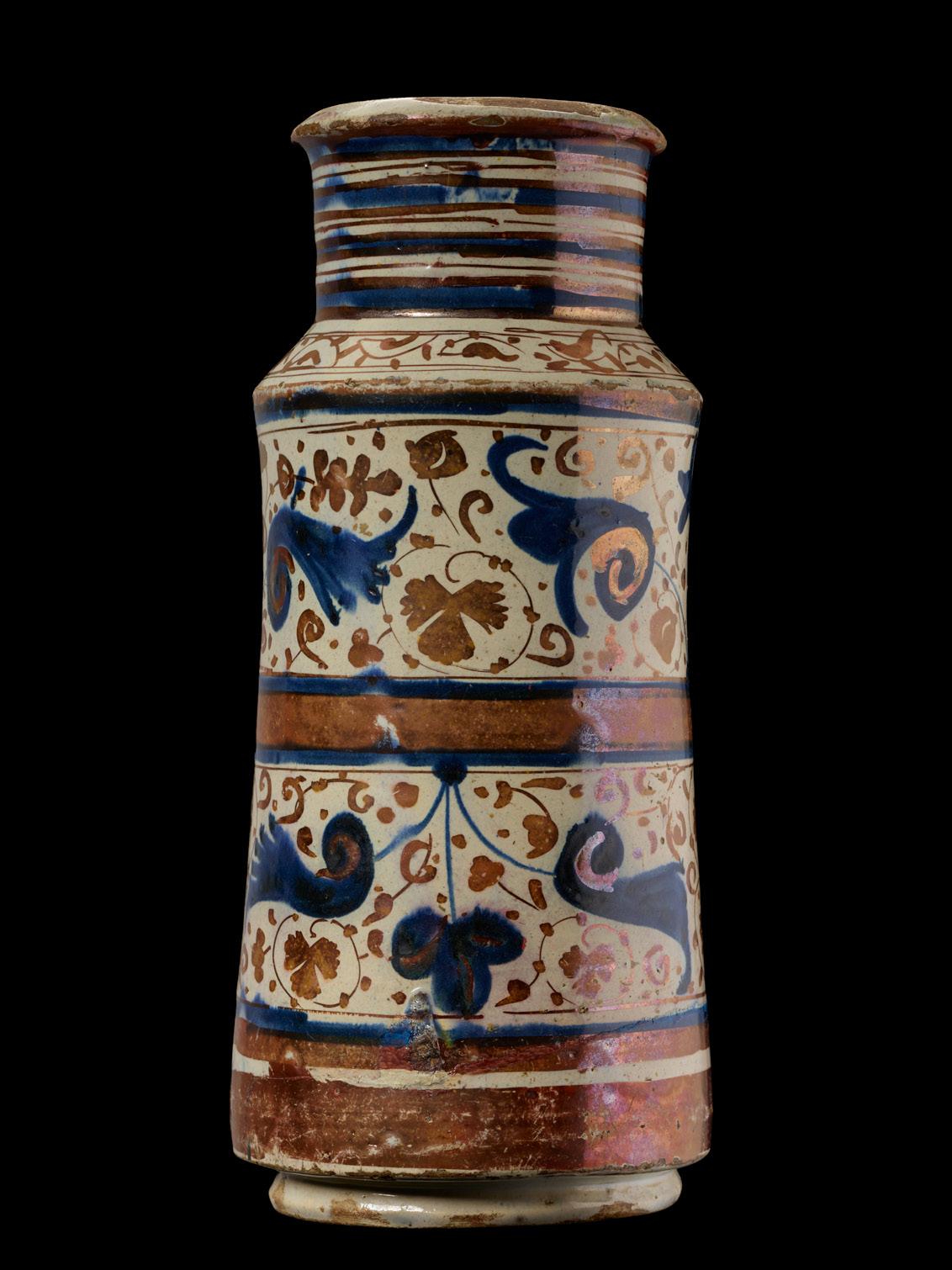
Albarello, Kunsthandlung Julius Böhler







